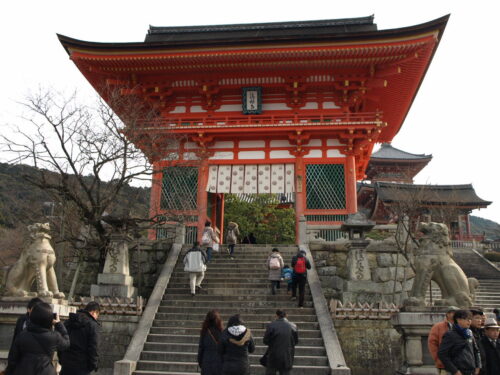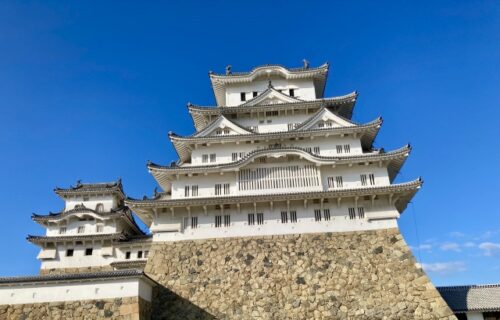BREAKING NEWS: Powerful M7.8 Earthquake Strikes Southern Chile at 5:29 AM JST on November 11
2025年10月11日
Stay informed on the M7.8 earthquake striking Southern Chile at 5:29 AM JST on November 11. This article provides immediate details, tsunami warnings, initial impact reports, and official responses to keep you updated on this significant seismic event.
目次
- 1 Immediate Details of the M7.8 Earthquake in Southern Chile
- 2 Tsunami Risk and Warnings After the M7.8 Earthquake
- 3 Initial Impact and Damage Reports from Southern Chile
- 4 Geological Context Chile’s Frequent Seismic Activity
- 5 Official Responses and Emergency Measures in Chile
- 6 Staying Informed: Latest Updates on the M7.8 Earthquake
- 7 Conclusion
Immediate Details of the M7.8 Earthquake in Southern Chile
When and Where the M7.8 Earthquake Struck
| Parameter | Detail |
|---|---|
| Date (Local Chile Time) | November 10 |
| Time (Local Chile Time) | 5:29 PM CLST (UTC-3) |
| Date (UTC) | November 10 |
| Time (UTC) | 8:29 PM UTC |
| Date (Japan Standard Time) | November 11 |
| Time (Japan Standard Time) | 5:29 AM JST |
| General Location | Off the coast of Southern Chile |
Magnitude and Depth of the Southern Chile Earthquake
Tsunami Risk and Warnings After the M7.8 Earthquake
Initial Tsunami Bulletins for the Pacific Region
Following a powerful M7.8 earthquake off the coast of Southern Chile, regional and international tsunami warning centers immediately began assessing the potential for hazardous waves across the Pacific Basin. The Pacific Tsunami Warning Center (PTWC), based in Hawaii, is the primary authority responsible for issuing international tsunami threat messages to national authorities throughout the Pacific Ocean and Caribbean regions.
For an earthquake of this magnitude and location, PTWC would typically issue a Tsunami Threat Message, advising national authorities of the potential for dangerous coastal flooding and strong, unusual currents. Initial assessments focus on areas within approximately 1,000 kilometers (620 miles) of the epicenter, particularly along the coasts of Chile. Such a significant seismic event often triggers Tsunami Warnings or Advisories for nearby coastal regions, necessitating immediate evacuation or precautionary measures.
Authorities in Chile, such as the Navy Hydrographic and Oceanographic Service (SHOA), would promptly issue their own national tsunami warnings and evacuation orders for affected coastal areas. The potential for hazardous tsunami waves is closely monitored, with continuous updates provided as sea-level data and further seismic analysis become available. Past M7.5 to M8.8 earthquakes in or near Chilean waters have consistently led to such warnings and evacuations, underscoring the critical need for vigilance in seismically active regions.
A tsunami is not a single wave but a series of waves, and the initial wave may not always be the largest. The hazard can persist for many hours after the first arrival, requiring sustained caution. Even when waves appear small at sea, they can behave unpredictably and dangerously near shore.
| Alert Level | Potential Hazard | Recommended Public Action |
|---|---|---|
| Tsunami Warning | Widespread dangerous coastal flooding and powerful currents expected or occurring. | Evacuate low-lying coastal areas to higher ground immediately. Follow instructions from local officials. |
| Tsunami Advisory | Strong currents or waves dangerous to those in or very near the water expected or occurring; flooding of beach and harbor areas possible. | Stay out of the water and away from beaches and waterways. Follow instructions from local officials. |
| Tsunami Watch | A distant earthquake has occurred; a tsunami is possible. | Stay tuned for more information. Be prepared to take action if necessary. |
| Tsunami Information Statement | An earthquake has occurred, but there is no threat or the threat has not been determined. | No action suggested other than normal caution around the sea. |
For detailed definitions of tsunami alerts and safety guidelines, refer to resources from the National Weather Service.
Japan’s Tsunami Watch Status and Precautions
Given the trans-Pacific nature of tsunamis, the Japan Meteorological Agency (JMA) closely monitors seismic events in distant regions like Southern Chile for any potential impact on Japan’s extensive coastline. The JMA, which operates a sophisticated tsunami warning system, coordinates with the PTWC to assess the threat from such distant earthquakes.
Upon detection of a major earthquake in the Pacific, the JMA quickly analyzes seismic data to estimate the possibility of tsunami generation and its propagation across the ocean. While the initial waves from a Chilean earthquake would take many hours to reach Japan, a “Tsunami Watch” or “Tsunami Advisory” could be issued for Japanese coastal areas if a significant distant tsunami is deemed possible.
In such scenarios, the JMA would provide estimated arrival times and potential tsunami heights for various regions of Japan, urging coastal residents and maritime operators to take precautions. These precautions typically include staying away from beaches, rivers, and estuaries, securing vessels, and being prepared for potential evacuation if the threat escalates to a Tsunami Warning. Japan’s robust warning system aims to provide critical lead time for public safety, drawing lessons from past events to enhance preparedness and response.
For more information on Japan’s tsunami warning system and its protocols for distant earthquakes, please consult the official resources of the Japan Meteorological Agency.
Initial Impact and Damage Reports from Southern Chile
Affected Regions and Local Conditions
Following the powerful M7.8 earthquake, initial reports indicate widespread disruption across several regions of Southern Chile. The tremor, striking at 5:29 AM JST (likely late afternoon/evening local time on November 10 in Chile), caused immediate and significant shaking, leading to diverse impacts depending on proximity to the epicenter and local geological conditions. Areas within the Biobío, Maule, Los Ríos, and Los Lagos regions, including major urban centers such as Concepción, Valdivia, and Puerto Montt, are believed to be among the most severely affected. Coastal communities, particularly those susceptible to tsunami inundation, face compounded challenges.
Early assessments suggest extensive power outages have plunged many areas into darkness, hindering immediate communication and relief efforts. Communication networks, including mobile phone services, are experiencing significant disruptions, making it difficult to ascertain the full scope of the situation in remote areas. Landslides and rockfalls, a common consequence of strong seismic activity in Chile’s mountainous terrain, are blocking key roadways, further isolating communities and impeding emergency access.
| Region/City (Examples) | Initial Observations and Expected Conditions |
|---|---|
| Concepción (Biobío Region) | Likely severe shaking, potential for moderate to heavy damage to older structures, widespread power outages, and communication interruptions. As a major urban center, early reports would focus on structural integrity of buildings and public services. |
| Valdivia (Los Ríos Region) | Strong shaking, potential for liquefaction in susceptible areas, and significant damage to infrastructure. Historically vulnerable to major seismic events. |
| Puerto Montt (Los Lagos Region) | Expected strong ground motion. Coastal areas are at risk from potential tsunami waves, leading to flooding and damage to port facilities. |
| Chiloé Island and Coastal Communities | High risk of tsunami inundation, with waves potentially causing extensive damage to coastal infrastructure, fishing villages, and displacement of residents. Communication blackouts are particularly challenging here. |
Early Assessments of Infrastructure and Casualties
The initial hours following the M7.8 earthquake are critical for search and rescue operations and preliminary damage assessments. Emergency services, civil defense, and military units are mobilizing to reach affected zones, though access is severely hampered by damaged roads and communication breakdowns.
Infrastructure Damage
Reports indicate significant damage to various critical infrastructure components across Southern Chile. While Chile has stringent building codes designed to withstand seismic activity, older structures and certain types of infrastructure remain vulnerable.
| Infrastructure Type | Expected Impact and Initial Reports |
|---|---|
| Residential Buildings | Numerous homes are reported damaged or destroyed, particularly those of older construction or in areas experiencing intense shaking. Assessments are underway to determine the number of uninhabitable dwellings. |
| Roads and Bridges | Highways and secondary roads are experiencing closures due to landslides, cracks, and structural damage to bridges, severely disrupting transportation and aid delivery. |
| Ports and Coastal Facilities | Coastal ports and fishing infrastructure are likely to have sustained damage from both ground shaking and any localized tsunami waves, potentially impacting maritime operations and local livelihoods. |
| Utilities (Electricity, Water, Gas) | Widespread power outages are confirmed, affecting millions. Disruptions to water supply and gas lines are also being reported, posing immediate public health and safety concerns. |
| Communication Networks | Telecommunications infrastructure has been severely impacted, making coordination of rescue efforts and information dissemination challenging in the immediate aftermath. |
Casualty Reports and Emergency Response
As of the latest updates, initial casualty figures are still emerging and are expected to rise as search and rescue teams gain access to more isolated areas. Reports include individuals trapped in collapsed structures and numerous injuries. The immediate priority is locating survivors and providing urgent medical attention. Emergency response teams are working under challenging conditions, facing difficulties due to debris, damaged roads, and limited communication. The Chilean government has activated emergency protocols, deploying resources and personnel to the affected zones.
International aid organizations are monitoring the situation closely and preparing to offer support as needed, coordinating with local authorities to ensure effective humanitarian assistance.
Geological Context Chile’s Frequent Seismic Activity
Chile’s remarkable geological landscape and its propensity for frequent, powerful earthquakes are direct consequences of its location along the volatile Pacific Ring of Fire and the dynamic interaction of several major tectonic plates. This active continental margin is one of the most seismically active regions globally, characterized by ongoing subduction processes that shape its dramatic topography and generate significant seismic events.
The Convergence of Tectonic Plates
The primary geological driver behind Chile’s seismic activity is the subduction of oceanic plates beneath the South American continental plate. Along most of its extensive coastline, the Nazca Plate, an oceanic tectonic plate, is actively diving beneath the South American Plate. This convergence occurs at an impressive rate, varying from approximately 65 to 80 millimeters per year. The immense friction and stress accumulated at this boundary are periodically released as earthquakes.
The Peru-Chile Trench and Subduction Zone
The meeting point of the Nazca Plate and the South American Plate is marked by the Peru-Chile Trench, also known as the Atacama Trench, which is one of the deepest oceanic trenches in the world and the longest subduction zone globally, stretching approximately 7,500 kilometers. This active convergent margin is responsible for the uplift of the Andes Mountains and the active volcanic chain that parallels much of the deformation front.
Chile Triple Junction
In southern Chile, the tectonic setting becomes even more complex with the presence of the Chile Triple Junction. Here, three major tectonic plates converge: the Nazca Plate, the South American Plate, and the Antarctic Plate. This triple junction is unique because it involves a mid-oceanic ridge, the Chile Rise, being subducted under the South American Plate at the Peru-Chile Trench.
The table below summarizes the key tectonic plates influencing Chile’s seismic environment:
| Tectonic Plate | Type | Interaction with South American Plate | Significance to Chile |
|---|---|---|---|
| Nazca Plate | Oceanic | Subducting beneath the South American Plate (convergent boundary) | Primary driver of large megathrust earthquakes and Andean orogeny. |
| South American Plate | Continental | Overriding plate, being uplifted and deformed by subduction | Forms the continental landmass of Chile and the Andes Mountains. |
| Antarctic Plate | Oceanic | Subducting beneath the South American Plate in southern Chile (convergent boundary) | Contributes to seismic activity and the complex Chile Triple Junction in the south. |
The Pacific Ring of Fire Connection
Chile is an integral part of the Pacific Ring of Fire, a horseshoe-shaped belt around the Pacific Ocean known for its intense seismic and volcanic activity. This region accounts for a significant majority of the world’s earthquakes and volcanic eruptions. Chile alone boasts a large number of volcanoes, with approximately 90 potentially active, highlighting the extensive magmatic activity associated with subduction.
Formation and Seismicity of the Andes Mountains
The majestic Andes Mountains, stretching approximately 7,500 kilometers along the western edge of South America, are a direct result of the ongoing collision and subduction of the Nazca Plate beneath the South American Plate. This process, known as the Andean orogeny, has been active for over 200 million years and continues to elevate the mountain range. The immense forces involved lead to crustal shortening, thickening, and folding of rocks, contributing to the Andes’ impressive height.
The seismic activity within the Andes is varied, with earthquakes occurring at different depths. Shallow-focus earthquakes (0-70 km deep) are common and result from both crustal deformation within the South American Plate and interplate slip along the subduction interface. Deeper earthquakes also occur within the subducting Nazca Plate as it descends into the mantle, sometimes reaching depths greater than 600 km.
Historical Seismic Events and Their Significance
Chile’s geological history is punctuated by numerous powerful earthquakes. The country is known for several “great earthquakes” (magnitude 8 or higher), occurring roughly every 10 to 80 years when considering the entire country or specific segments of the subduction zone. The most powerful earthquake ever instrumentally recorded, the 1960 Valdivia earthquake (Magnitude 9.5), occurred off the coast of southern Chile, demonstrating the immense seismic potential of this region. This megathrust earthquake was a direct result of the release of mechanical stress between the subducting Nazca Plate and the South American Plate along the Peru-Chile Trench. Other notable historical earthquakes include the 2010 Maule earthquake (M8.8) and the 2015 Illapel earthquake (M8.2).
Understanding Chile’s complex geological context, characterized by active plate tectonics, subduction zones, and its position on the Pacific Ring of Fire, is crucial for comprehending the frequency and intensity of its seismic events and the associated hazards.
Official Responses and Emergency Measures in Chile
Immediate Government Actions and Declarations
Deployment of Emergency Services and Military
Role of SENAPRED (National Service for Disaster Prevention and Response)
| Agency/Entity | Primary Role in Earthquake Response |
|---|---|
| SENAPRED (National Service for Disaster Prevention and Response) | Overall coordination of disaster risk management, issuing alerts, planning, and supervising response activities. |
| SHOA (Hydrographic and Oceanographic Service of the Navy) | Monitoring seismic activity and issuing official tsunami warnings and alerts. |
| Chilean Armed Forces (Military) | Maintaining security, enforcing curfews, distributing aid, and supporting logistics in affected zones. |
| Chilean Red Cross | Search and rescue, damage assessment, medical assistance, and provision of humanitarian aid. |
| Local Municipalities | Coordinating local emergency efforts, evacuations, and establishing shelters. |
International Aid and Coordination
Public Information and Communication Strategies
Staying Informed: Latest Updates on the M7.8 Earthquake
Official Government and Emergency Channels
Key Official Information Sources in Chile
| Agency | Role | Information Provided |
|---|---|---|
| Servicio Nacional de Prevención y Respuesta ante Desastres (SENAPRED) | National disaster prevention and response authority | Overall emergency status, official alerts, evacuation orders, damage reports, relief efforts, safety guidelines. |
| Hydrographic and Oceanographic Service of the Chilean Navy (SHOA) | Marine and tsunami warning service | Tsunami bulletins, sea state advisories, coastal hazard information. |
| Local Municipalities / Regional Governments | Local emergency coordination | Localized impact details, shelter information, community-specific safety instructions, resource distribution. |
International Monitoring and Warning Systems
Public Alert Systems and News Media
Summary of the Ongoing Situation
Conclusion
The powerful M7.8 earthquake that struck Southern Chile at 5:29 AM JST on November 11 serves as a stark reminder of the dynamic geological forces at play along the Pacific Ring of Fire. This significant seismic event immediately triggered widespread concern across the Pacific basin, leading to the issuance of tsunami bulletins and prompting coastal communities, including those in Japan, to assess their preparedness and maintain vigilance.
As initial reports emerge, the focus remains on understanding the full scope of the impact on affected regions within Southern Chile. Emergency services and official bodies are actively engaged in damage assessment, search and rescue operations, and providing assistance to those potentially affected by the tremor and any subsequent aftershocks. The robust emergency response protocols in place reflect Chile’s extensive experience in managing frequent seismic activity, a consequence of its geographical position.
For global communities, particularly those with coastlines susceptible to tsunamis, this event underscores the critical importance of rapid information dissemination and adherence to official advisories. Authorities continue to monitor seismic activity and ocean conditions closely, providing updates as the situation evolves. Staying informed through reputable news sources and official government channels remains paramount for anyone in potentially affected areas.
Key Takeaways from the Southern Chile M7.8 Earthquake
| Aspect | Summary |
|---|---|
| Magnitude & Location | M7.8 earthquake centered in Southern Chile. |
| Tsunami Threat | Tsunami warnings and advisories were issued for parts of the Pacific, requiring vigilance. |
| Immediate Response | Chilean authorities initiated emergency protocols, focusing on damage assessment and public safety. |
| Geological Context | The event highlights Chile’s position in a highly active seismic zone, necessitating ongoing preparedness. |
| Public Guidance | Continuous monitoring of official updates and adherence to safety instructions are crucial. |



